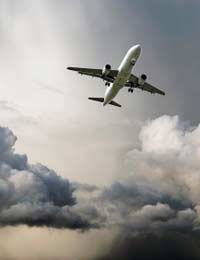Flight Safety

Everybody involved with aviation has or should have safety as his or her number one priority. There are many different subjects in aviation and nobody will ever know everything there is to know about it.
Flight Safety is obviously a very important subject and, like all of those used in aviation, is an ongoing learning process that should be reviewed frequently.
Some Major Safety Checks to Make Before Deciding to Fly -
The Weather
Safety checks can begin before you even set off for the airfield! One of the biggest factors to consider before you can safely fly is the weather. Learn to use and make full use of the free online MET Office Aviation briefing service to check weather conditions at your destination(s) and each leg of the planned route.It is important to check that the weather conditions, on all legs of the intended route, will meet Visual Meteorological Conditions (VMC) while using Visual Flight Rules (VFR).
Rules for VMC vary with the level and type of airspace that an aircraft will be flying in so make sure you take this into account when carrying out your assessment.
Weather conditions at the departing/destination airfields do not always match those reported by the MET Office! If you have any doubts about the weather before a flight then telephone the control tower(s) at the intended destination(s) to check if the conditions are suitable for the type of flight to be made.
Planning
It is essential to plan a journey or exercise thoroughly before departing.
- Make sure that the aviation map(s) being used are up to date and appropriate for the area to be flown in.
- Draw the intended route onto the map and check for hazards such as active danger areas and restricted airspace etc. and that they are avoided.
- Use the online Aeronautical Information Service (AIS) and make a narrow route Notice To Airmen (NOTAM) check for the intended route.
- Include and plan for another airfield to divert to should the destination airfield become unavailable for use during the flight.
- Complete a flight plan that shows distances, headings, estimated leg journey times, en-route contact frequencies etc. and make sure it is easily accessible inside the aircraft.
- Wear high visibility clothing whilst walking on any part of the airfield.
- Perform a thorough pre-flight check on the aircraft
- Brief any passengers on safety procedures including the instructor if they are on board!
- Always look out and shout "clear prop" before starting the engine.
- Keep a good look out for pedestrians, other aircraft, vehicles and obstructions while taxiing to the runway.
- Use the correct radio procedure while on the ground and in the air
Safety While Flying
Aviate, navigate and communicate are the order of priorities while in the air as well as keeping a sharp lookout for other aircraft and hazards.- Aviate - keep the aircraft flying safely at the correct height and speed.
- Navigate - Make sure you know your position and keep the aircraft on the correct heading for that leg of the journey.
- Communicate - Only use the radio when you are satisfied that the aircraft is being flown safely and correctly navigated. If you become unsure of your position then use the radio to try and get an early position fix but always make sure that the aircraft is flying safely, "Aviate", before making that call.
- Lookout - Always keep a sharp lookout for other aircraft, tethered balloons, glider towropes and anything else that can become an obstacle. Instruct passengers to tell you and point to other aircraft or obstacles that they may have spotted.
Sources of information
There are a number of training books, DVDs and websites available for use by both the student and qualified pilot. It is also worth reading the "incident reports" that some aviation magazines print, not in a morbid way, but simply to learn about other pilot's unfortunate experiences and help you to avoid sharing the same fate!.It is your responsibility to learn, practice and keep up to date with all aviation safety matters. If there is anything that you want to know or are not sure about regarding aviation safety then do not hesitate to look it up or ask your instructor about it.


Re: Aircraft General & Principles of Flight
how old do you have to be and how much is a lesson
Re: Aircraft General & Principles of Flight
Give the types of aircraft engines and its performance